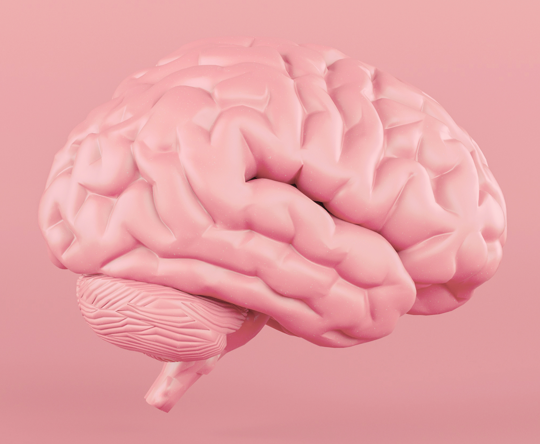After cataracts, glaucoma is the second leading cause of blindness in the world, but it is the most common cause of irreversible vision loss.
Visual impairment caused by glaucoma is irreversible, so early detection of the disease, diagnosis and timely treatment are extremely important. Since the incidence of glaucoma increases with age, and there are usually no symptoms, all persons over 40 years of age are advised to get regular ophthalmological examinations to measure intraocular pressure. This is especially true for people who have history of glaucoma in the family. This is recommended by Rašeljka Tadić, MD, ophthalmologist at the University Hospital Centre “Sestre milosrdnice”.
The World Health Organization estimates that out of the 2.2 billion people suffering from eye diseases worldwide, for at least a billion of them the disease could have been prevented. Apart from aging and genetic predispositions, eye health is influenced by many other factors we have control over ourselves, thus preventing disease and improving our health. This is why ophthalmologists, neurologists, endocrinologists, psychiatrists, rheumatologists, otorhinolaryngologists, plastic surgeons, general practitioners, pharmacists and engineers are brought together at X-Lab — the expert research hub by JGL — to analyse the latest research and, by applying a holistic approach, to share with us how to take care of our eye health and why that is important for our whole bodies.
1 What is the eye disease glaucoma and how does it occur?
Glaucoma is a disease of the optic nerve that leads to imperceptible and gradual deterioration of the visual field. If left untreated, it can lead to blindness. After cataracts, glaucoma is the second leading cause of blindness in the world, but it is the most common cause of irreversible vision loss. According to estimates by the World Health Organization, the number of people suffering from glaucoma will increase from 76 million to 95.4 million people by 2030. It is a disease that can occur in all age groups, but it most often occurs after the age of 40. The optic nerve is made up of nerve fibres that transmit information from the eye to the brain, where the image we are looking at is created. Damage to these nerve fibres leads to the appearance of blind spots in the visual field, and blindness occurs when all fibres are damaged. In glaucoma, damage to these nerve fibres most often occurs as a result of impaired fluid flow in the eye. With fluid retention in the eye, intraocular pressure rises and this condition is called high intraocular pressure or ocular hypertension. High intraocular pressure leads to deterioration because of continued pressure on the optic nerve over a long period of time, resulting in glaucoma-related damage to the visual field.
2 What else besides high intraocular pressure can cause glaucoma?
Elevated intraocular pressure is considered an important risk factor for the disease, but it’s not the only one. Older age, severe myopia, racial factors and ethnicity also play a significant role. Although the value of intraocular pressure is the most important risk factor for the development and progression of glaucoma, ten percent of patients with normal intraocular pressure still develop glaucoma. Depending on the mechanism of occurrence, several types of glaucoma exist: The most common form of glaucoma is open-angle glaucoma with elevated intraocular tension. When the intraocular pressure is within normal limits, it is normal tension glaucoma. Acute glaucoma, in which severe pain and headache are present, is called narrow-angle glaucoma. Glaucoma can also be present from birth – this is congenital glaucoma. It can also occur as a result of other eye diseases, such as injuries, inflammation, and advanced diabetes.
3 What are the symptoms? How can we recognize glaucoma?
Glaucoma usually has no symptoms. Some patients with narrow-angle glaucoma may experience severe pain and redness of the eye with blurred vision and headaches, but most have no symptoms. Damage to the optic nerve is slow and it initially does not affect the periphery of the visual field, which gradually narrows. Central vision and visual acuity can be preserved for a long time, which is why patients are not aware of vision loss. Although patients do not notice any visual defect, it can only be detected by ophthalmological examination. The patient will be able to notice vision problems, but only at the stage when major damage to the optic nerve occurs. At that point, unfortunately, the loss in the visual field is irreversible. This is exactly what makes glaucoma dangerous and why we call it the silent killer of sight. If glaucoma is not detected and treated in time, it can end in blindness. The only way to detect the disease in a timely manner is through ophthalmological examinations that include measuring intraocular pressure, examining the optic nerve, as well as additional diagnostic procedures, including eye angle examination, visual field examination and assessing the state of the optic nerve fibres.
4 What are the normal levels of intraocular pressure and how can we measure it?
During a complete ophthalmological examination, the value of intraocular pressure is determined by Goldmann’s applanation tonometry, which is the generally accepted gold standard in the world. It is a method in which the tonometer makes contact with the anesthetized ocular surface. The normal value of intraocular pressure measured with this method is 10 to 21 mmHg. Nowadays, there are other non-contact measurement methods, which, although practical, have not proven reliable so far. It is important to emphasize that measuring intraocular pressure alone is not enough to confirm or rule out a diagnosis of glaucoma. A complete ophthalmologic examination is required, during which the ophthalmologist will assess the risk and the need for additional diagnostic procedures.
5 How is glaucoma treated?
Visual impairment caused by glaucoma is irreversible, but can be prevented and stopped with timely treatment. Glaucoma can be treated with medication (eye drops), laser procedures or surgically, depending on the type and the vision damage at the time of diagnosis. Eye drop drugs work to reduce intraocular pressure, which slows down further deterioration of the visual field, and, once prescribed, should be used continuously throughout life. They must be taken daily, in the appropriate dosage. In addition to the desired effect, the drops also have some side effects such as a burning sensation, redness of the eye and changes in eye colour. Patients suffering from dry eye syndrome are particularly challenging when treating the disease. There is a large selection of antiglaucoma drugs on the market, so a patient cannot take some of them, others may be prescribed. In case of failure or intolerance to drug treatment, glaucoma can also be treated surgically.
6 How is dry eye related to glaucoma?
Today, it is estimated that nearly 1.4 billion people worldwide suffer from dry eye syndrome. It is a disease with a variety of symptoms such as a foreign body sensation, a feeling of having sand in the eye, tingling, stinging, tearing (epiphora), discomfort, redness of the eye, occasional blurred vision and hypersensitivity to light. Dry eye can seriously impair the quality of life and at the same time make it more difficult for patients with glaucoma to treat it. The reason is that the use of antiglaucoma drops exacerbates the symptoms of dry eye, which can be so pronounced that patients most often decide to discontinue therapy, and this can lead to serious consequences for vision. Antiglaucoma drops contain active ingredients and excipients, while some contain preservatives. Preservatives, such as benzalkonium chloride, keep the drops sterile, but at the same time these contribute to damage to the eye surface and tear film, thus worsening the symptoms of dry eye. Cooperation between the patient and the ophthalmologist is crucial for the proper treatment of both conditions.
Glaucoma must be treated to prevent blindness, and dry eye syndrome must be treated to preserve eye surface health, quality of vision and life. Treatment for patients with glaucoma and dry eye syndrome usually involves the use of eye drops, and choosing the best combination is key to success. Numerous preservative-free antiglaucoma drops are available on the market today and are prescribed to these patients as well as to patients before undergoing glaucoma surgery. In addition to antiglaucoma therapy, patients are prescribed daily use of preservative-free artificial tears and regular eyelid hygiene to treat dry eye syndrome. To reduce the environmental factors that contribute to the worsening of dry eye symptoms, it is advisable to humidify your room, avoid spending long hours at the computer, maintaining proper air conditioning and space heating. This improves the condition of the ocular surface, which is very important for the outcome of any potential surgical treatment of glaucoma.
7 What is the most important thing we can do for better eye health and how to live with glaucoma?
The fight against glaucoma-related blindness begins with education, so World Glaucoma Week is celebrated every March. Visual impairment caused by glaucoma is irreversible, so early detection of the disease, diagnosis and timely treatment are extremely important. Since the incidence of glaucoma increases with age, and there are usually no symptoms, all persons over 40 years of age are advised to get regular ophthalmological examinations to measure intraocular pressure. This is especially true for people who have history of glaucoma in the family. Once diagnosed, glaucoma requires regular ophthalmologic examinations. The number of follow-up examinations you need is determined by your ophthalmologist based on the clinical examination, as well as on the effectiveness of the therapy. Glaucoma treatment must be team-based and involve both the ophthalmologist and the patient. The ophthalmologist should prescribe and explain the correct way to use the eye drops, and the patient must adhere to the therapy on a daily and disciplined basis and go for regular check-ups. This is the only way to achieve the goal – maintaining eye health and quality vision and preventing blindness.
QUIZ
SUFFERING FROM DRY EYE SYNDROME? ANSWER THESE QUESTIONS AND FIND OUT HOW TO PREVENT IT AND WHAT TO DO WHEN YOU ARE ALREADY FEELING THE SYMPTOMS
QUIZ





